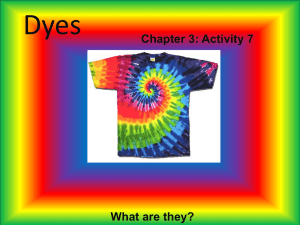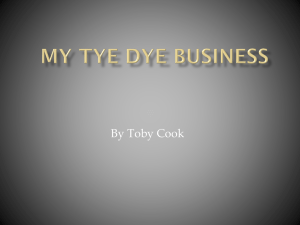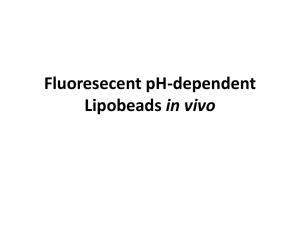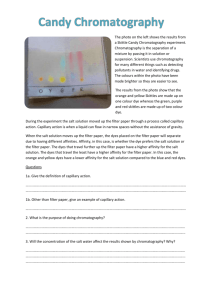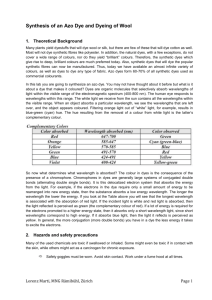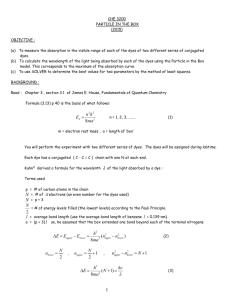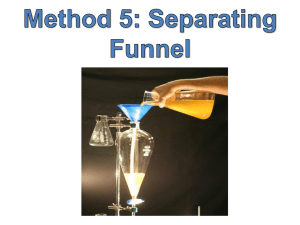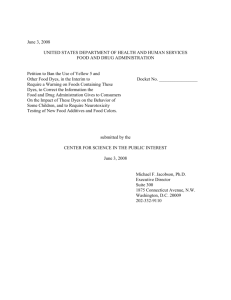23 – Food dye - Citizens Leadership Academy
advertisement
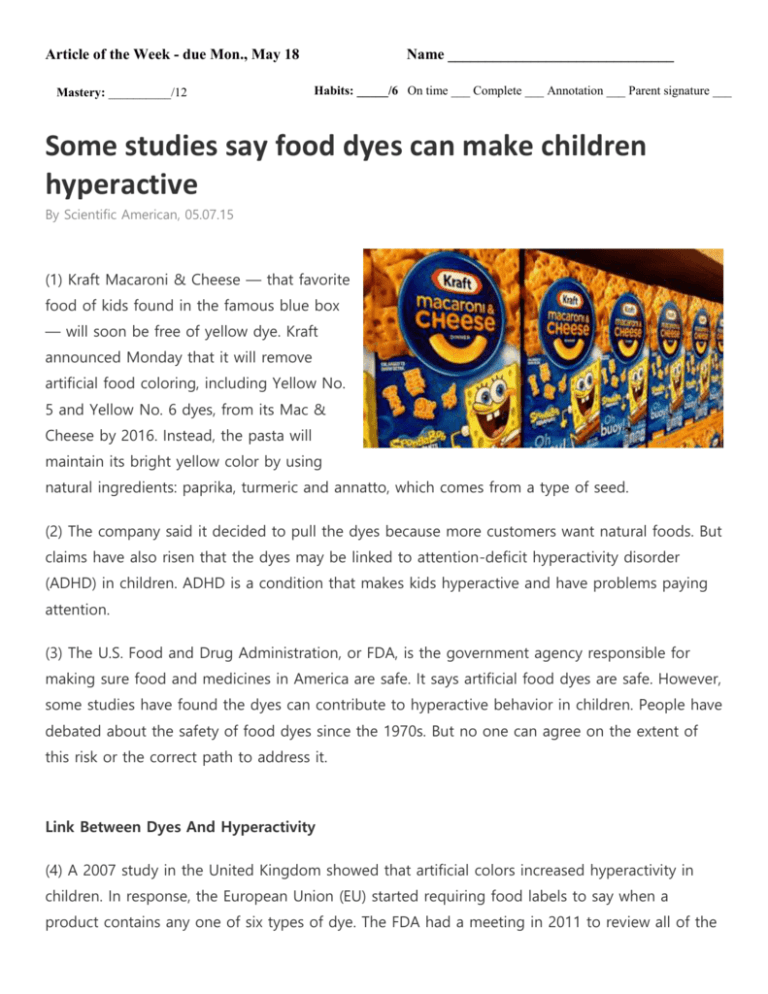
Article of the Week - due Mon., May 18 Mastery: __________/12 Name ______________________________ Habits: _____/6 On time ___ Complete ___ Annotation ___ Parent signature ___ Some studies say food dyes can make children hyperactive By Scientific American, 05.07.15 (1) Kraft Macaroni & Cheese — that favorite food of kids found in the famous blue box — will soon be free of yellow dye. Kraft announced Monday that it will remove artificial food coloring, including Yellow No. 5 and Yellow No. 6 dyes, from its Mac & Cheese by 2016. Instead, the pasta will maintain its bright yellow color by using natural ingredients: paprika, turmeric and annatto, which comes from a type of seed. (2) The company said it decided to pull the dyes because more customers want natural foods. But claims have also risen that the dyes may be linked to attention-deficit hyperactivity disorder (ADHD) in children. ADHD is a condition that makes kids hyperactive and have problems paying attention. (3) The U.S. Food and Drug Administration, or FDA, is the government agency responsible for making sure food and medicines in America are safe. It says artificial food dyes are safe. However, some studies have found the dyes can contribute to hyperactive behavior in children. People have debated about the safety of food dyes since the 1970s. But no one can agree on the extent of this risk or the correct path to address it. Link Between Dyes And Hyperactivity (4) A 2007 study in the United Kingdom showed that artificial colors increased hyperactivity in children. In response, the European Union (EU) started requiring food labels to say when a product contains any one of six types of dye. The FDA had a meeting in 2011 to review all of the studies out there. It concluded that there was not enough evidence proving that foods with artificial colors caused hyperactivity in the general population. The FDA said more research was needed. (5) But Joel Nigg, a professor at Oregon Health & Science University, disagrees. He says the studies support the link between dyes and hyperactivity. "On the one hand you can sympathize with those who want to take a wait-and-see attitude," he says. But, he adds, "Do you want to take a chance that these initial studies are wrong and put kids at risk?" (6) A 2012 comparison of studies by Nigg concluded that color additives have an effect on hyperactivity in children. He also concluded that further research was needed. Many of the studies looked at only small numbers of people. Studies have also shown that removing foods containing artificial dyes from diets can lower hyperactivity. However, Nigg says this is likely because removing processed foods in general is healthier and leads to better behavior. "Some Capacity To Harm" (7) Companies add artificial colors to make their products look tastier. The chemicals Yellow Nos. 5 and 6 have been used since the early 1900s. They are 2 of the 9 colors that food manufacturers must list on food labels. According to the FDA, 1 out of every 10,000 people are allergic to Yellow No. 5. An April 2015 study looked at how much dye was in processed foods. It found that one serving of Kraft Macaroni and Cheese contained less than what the FDA considers an unsafe amount. (8) Bernard Weiss, a professor at the University of Rochester Medical Center, has researched this issue for many years. He is frustrated that the FDA has not acted on the research showing the connection between artificial dyes and hyperactivity. "All the evidence we have has showed that it has some capacity to harm," he says. "In Europe, that's enough to get it banned. In this country, it's up to the government to find out whether or not there are harmful effects." Weiss supports banning artificial colors until companies prove they are safe. Like most other scientists in this field, he thinks more research is necessary. (9) Nigg says the FDA should require manufacturers to label foods saying artificial colors could affect hyperactivity in some children. He said, "There's a subgroup of kids that seems to respond much more to these types of things, and that group is what I worry about.” The only way to protect that subgroup, Nigg says, “is to protect everybody." Article of the Week Questions Due Monday, May 18 Name ______________________________ Read each question carefully, then write your answer in the blank. (6 points) _______ 1. Which sentence from the article BEST explains why it may be good to stop using yellow dye in foods? A. Weiss supports banning artificial colors until companies prove they are safe. B. However, some studies have found the dyes can contribute to hyperactive behavior in children. C. However, Nigg says this is likely because removing processed foods in general is healthier and leads to better behavior. D. In response, the European Union (EU) started requiring food labels to say when a product contains any one of six types of dye. 2. Which paragraph in "Some Capacity To Harm" (7-9) provides details about the use of food dyes? Write the paragraph number here: _____________ _______ 3. Fill in the blank. According to the article, most scientists believe _________________________. A. food dyes are safe in small amounts. B. more studies about food dyes are needed. C. yellow food dyes cause people to become ill. D. all dyes should be removed from food products. ______ 4. The final paragraph in the article does which of the following? A. makes a prediction B. provides a summary C. offers an explanation D. presents an argument _______ 5. How does the author explain the viewpoint of people who disagree with the FDA? A. by interviewing children with health problems B. by describing how the dyes are created in a lab C. by quoting experts who have studied dyes D. by giving facts about the number of hyperactive children _______ 6. Which BEST describes the way the author structures the section "Some Capacity to Harm"? A. order of events B. cause and effect C. problem and solution D. compare and contrast For each statement below, circle/shade in whether the text/author would agree or disagree with it, and in the space provided, give a quote from the text and explain how it supports your answer. (6 points) Agree? yes no Statements Your Evidence (quote, paragraph #, briefly explain) 1. Kraft macaroni and cheese will no longer be yellow. yes no 2. Concern over food dyes is new. yes no 3. The FDA is ready to ban artificial dyes. Parent signature _____________________________________________________________________ Parent comments/notes:

